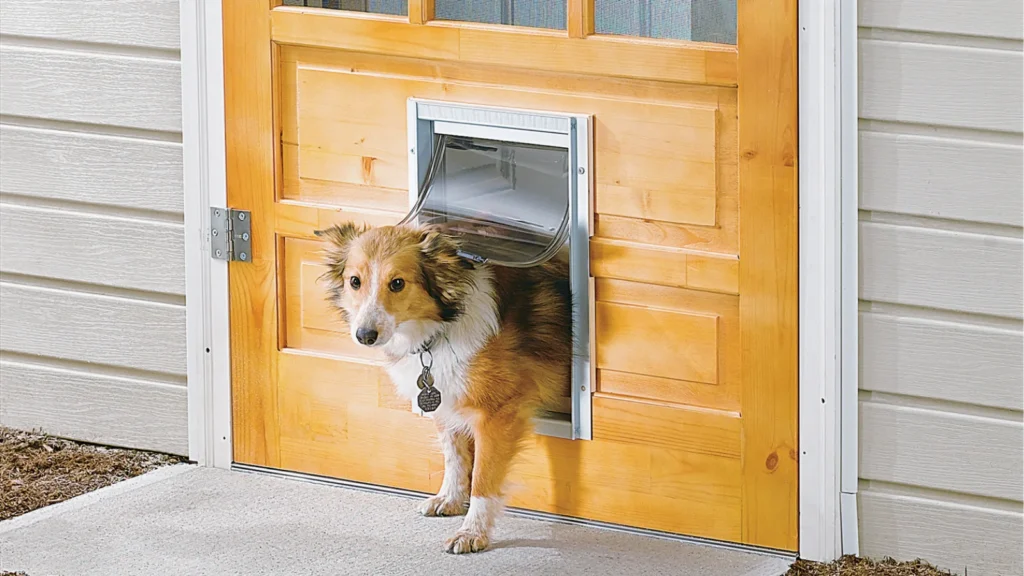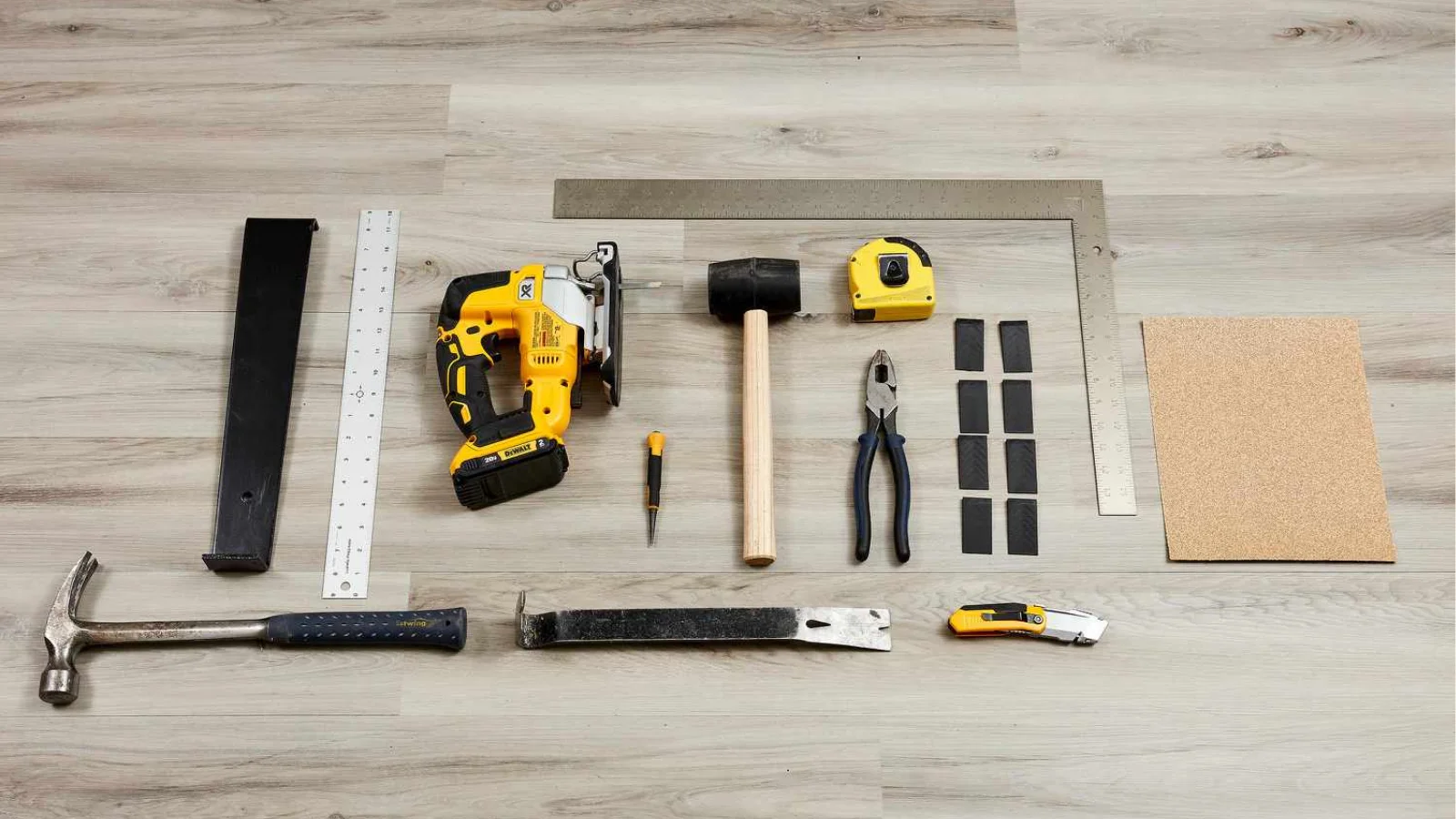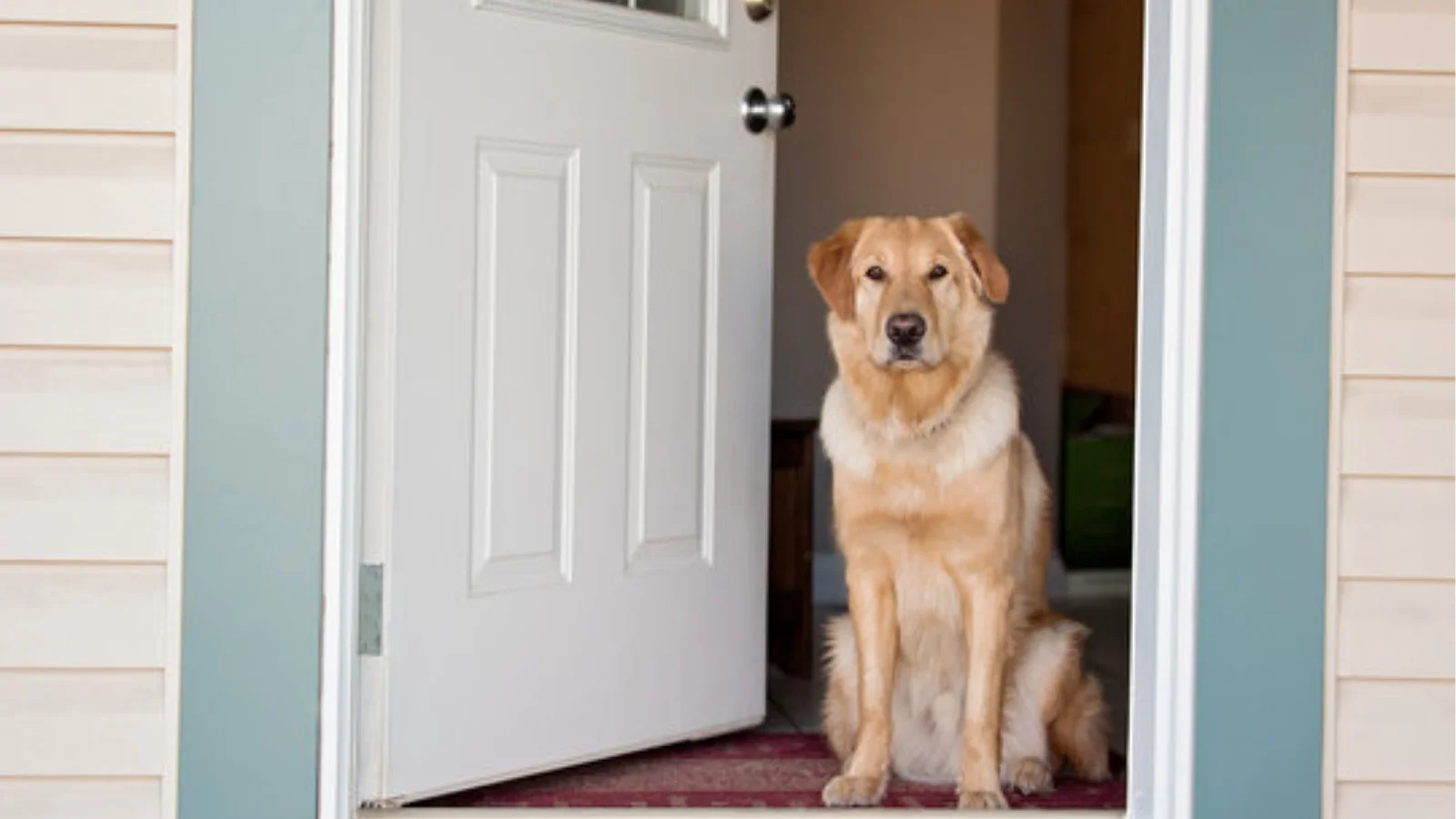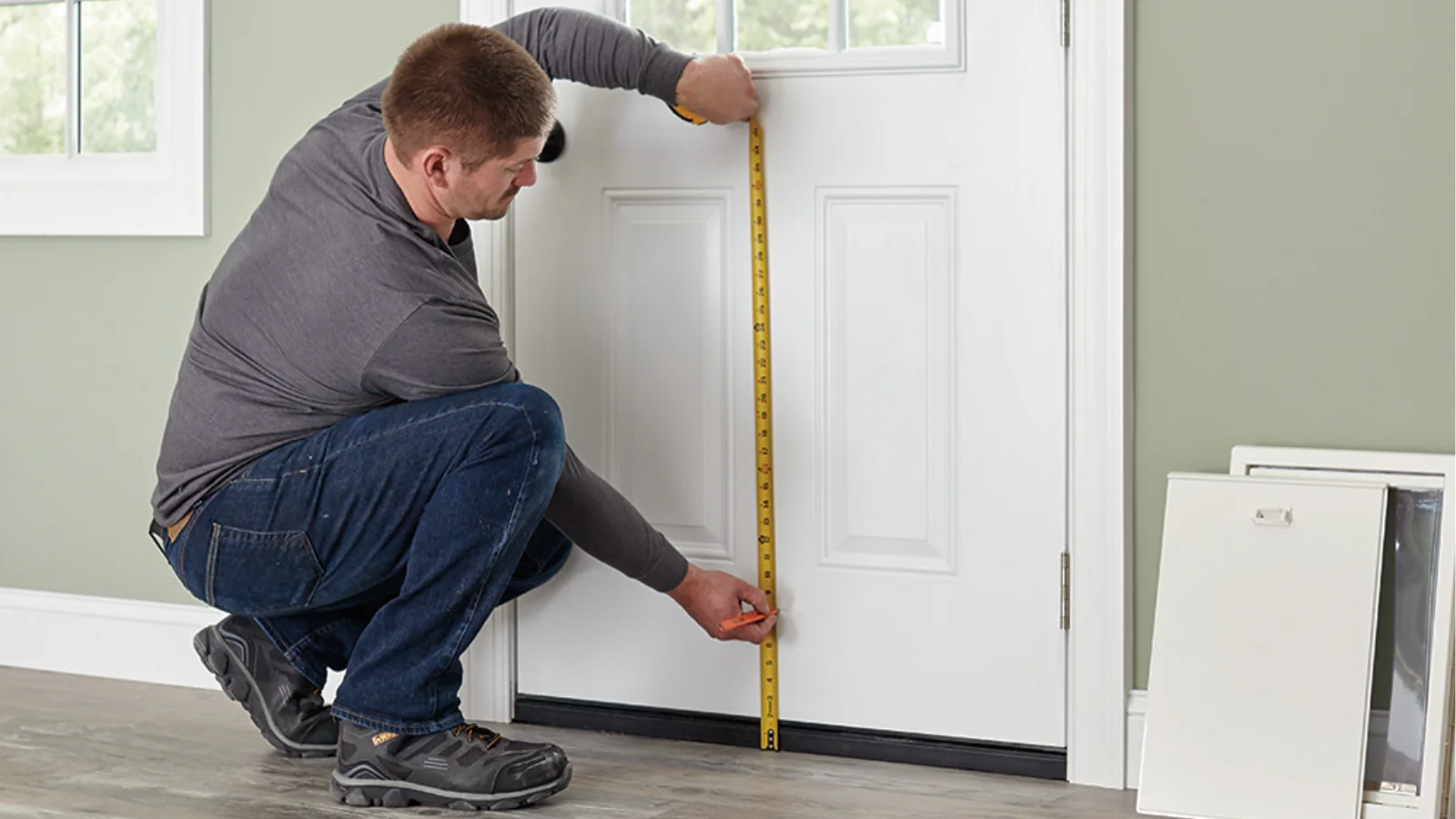Pet doors create freedom for dogs and convenience for owners. They allow pets to move freely inside and outside, reducing accidents and stress. Installing one also helps owners avoid constant door duty, giving them peace of mind. Understanding how to install dog door correctly ensures a safe, secure, and long-lasting solution for your home.
While many homeowners attempt dog door installation themselves, not all approaches are equal. Incorrect cuts, poor measurements, or skipped safety steps may create problems later. Taking a careful approach with the right tools and preparation saves time and prevents costly mistakes. This guide explains the entire process clearly and safely.
Benefits of Installing a Dog Door
A dog door provides convenience for pet owners who no longer need to open doors constantly. Dogs gain independence to go outside when needed, reducing stress and accidents indoors. It helps manage daily routines more efficiently, especially for busy households with active pets that require frequent outdoor time.
Another benefit is better hygiene and home comfort. Pets can relieve themselves without waiting, keeping floors and carpets cleaner. Outdoor access also encourages more exercise, which supports healthier pets. Installing a dog door balances convenience, cleanliness, and overall quality of life for both pets and owners.
Choosing the Right Dog Door for Your Home
Selecting the right dog door ensures both safety and comfort. Door-mounted models are simple and cost-effective, suitable for most homes. Wall-mounted doors allow more flexibility but may require professional cutting and sealing. Sliding glass inserts are another option, offering convenience without structural changes. Learning how to install dog door also means choosing the right type from the start.
Size matters when selecting a pet door. Always measure your dog’s height and width before purchasing. The door should be tall enough for comfortable entry but not oversized. Many models now include features such as weatherproof sealing and locking mechanisms, improving energy efficiency and home security while supporting your pet’s independence.
Tools and Materials Needed Before Installation
Proper preparation requires gathering the right tools. Essential equipment includes a measuring tape, drill, screwdriver set, and jigsaw or circular saw. These tools help cut clean openings and secure the door frame effectively. Protective gloves and safety glasses prevent injuries during drilling or cutting, ensuring safety remains a priority throughout dog door installation.
Along with tools, specific materials are needed. A dog door kit provides frames, flaps, and hardware for installation. Sealant and weatherstripping protect against drafts and energy loss. Having everything ready before beginning reduces interruptions and ensures smoother progress. Organized preparation also avoids costly mistakes caused by rushing or missing essential equipment mid-task.
How to Install Dog Door – Step by Step Process
Installing a dog door requires patience and accuracy. Each step builds on the last to ensure a safe, secure, and efficient outcome. Following these instructions helps homeowners master how to install dog door safely while avoiding unnecessary mistakes that could compromise security or comfort for both pets and family members.
Measure Your Pet and Mark the Correct Height
Measure your dog’s height from the floor to its shoulders. Mark this measurement on the chosen surface. Position the door low enough for comfort but high enough to keep the flap above ground level. Correct measurement prevents injuries and ensures long-term usability for your pet’s size.
Outline the Template on the Chosen Surface
Most dog door kits include a template for marking. Tape it securely to the door or wall. Outline the area carefully with a pencil. Double-check alignment with a level to ensure straight placement. A correctly outlined template reduces cutting errors and ensures the door fits properly into the opening.
Drill Starter Holes at the Template Corners
Drill small holes in each template corner. These holes guide the saw blade and make cutting smoother. Ensure the holes are large enough for blade entry. Drilling prevents splintering and supports cleaner edges. Using starter holes also gives more control when cutting straight lines or curves in the chosen surface.
Cut the Opening Carefully With a Saw
Insert the saw into a starter hole and follow the template lines slowly. Use steady pressure to avoid jagged edges. Cutting carefully ensures accuracy and reduces damage to the surrounding material. Once finished, remove the cut section and sand edges lightly to smooth surfaces before placing the dog door frame.
Insert the Dog Door Frame and Secure It
Position the interior and exterior frames into the opening. Align both sides to fit snugly against the surface. Use the screws provided in the kit to fasten them securely. Tighten evenly to prevent gaps. A properly secured frame improves stability, keeps drafts out, and ensures smooth operation of the flap.
Seal Edges to Prevent Drafts or Leaks
Apply weather-resistant sealant along the edges of the frame. This seals small gaps, preventing energy loss and moisture intrusion. Add weatherstripping if needed for extra insulation. Proper sealing keeps the home energy-efficient and extends the dog door’s lifespan by preventing water or air leaks through the installation area.
Test the Door With Your Pet
Encourage your dog to use the new door gently. Guide them through with treats or praise until comfortable. Check flap movement for smooth opening and closing. Observe the door’s fit and performance after several uses. Testing ensures the door functions properly and meets your pet’s needs without causing hesitation or stress.
Safety Tips for Dog Door Installation
Safety should guide every step of dog door installation. Always wear protective gloves and safety glasses when cutting or drilling. Sharp tools pose risks, and proper gear prevents injuries. Avoid cutting into areas that may contain electrical wiring or plumbing. Check surfaces beforehand to ensure the space is safe and clear for installation.
Smooth edges after cutting to protect pets from injury. Sand any rough spots or add trim as needed. Ensure screws are tightened securely to avoid loose parts that may harm pets. Following these precautions ensures a safe and pet-friendly dog door that supports long-term use without creating risks.
Mistakes to Avoid When Installing a Dog Door
A common mistake is choosing the wrong size. If the opening is too small, pets struggle to enter comfortably. Oversized doors may compromise security or energy efficiency. Measuring your dog correctly prevents this issue. Another mistake is cutting without using the template. Knowing how to install dog door properly means respecting measurement, safety, and sealing steps every time.
Ignoring insulation and sealing during installation is another error. Gaps allow drafts, water, and pests to enter. Poor sealing also shortens the lifespan of the dog door. Rushing the process often leads to mistakes that require costly fixes. Avoiding these errors ensures the installation remains durable, secure, and energy-efficient for the household.
Training Your Dog to Use the New Door
Introducing a dog door requires patience. Begin by encouraging your pet with treats and praise. Hold the flap open initially to reduce hesitation. Guide your dog through slowly and reward successful attempts. This builds confidence and helps pets understand the new access point. Consistency and encouragement make pet door training smoother for both owner and pet.
Some pets may take longer to adjust. Use short training sessions each day to build comfort gradually. Avoid forcing your dog through the door, as it may cause fear. Instead, let them explore at their own pace. With time and patience, most pets learn quickly and use their new door confidently.
When to Call a Professional Installer
Some installations require more skill than DIY methods allow. If unsure about cutting into walls or doors, seek help from a professional installer. Incorrect cutting may damage structural elements. Professionals ensure proper alignment and sealing, protecting both home integrity and energy efficiency. Their experience reduces risks and ensures the door functions properly after installation.
Call an installer if wiring, plumbing, or complex materials are involved. Professional installers have the right tools to handle challenging setups safely. They also recommend the best dog door models for specific needs. Expert help guarantees secure, efficient installation without unnecessary delays or costly mistakes.
Call for Expert Dog Door Installation Today
Installing a dog door improves convenience and supports pet independence, but mistakes can create problems. Professionals bring the right tools, skills, and experience for safe and lasting results. They handle complex installations, ensure proper sealing, and recommend doors suited to your pet’s needs. Their expertise guarantees smoother, faster, and more secure installations.
From door-mounted models to custom wall installations, expert services cover every requirement. Professional guidance ensures both pets and owners enjoy comfort, safety, and efficiency. Don’t risk improper installation or wasted time. Contact Eclipse Service Hub today for expert dog door installation services you can trust.
Conclusion
A dog door brings freedom for pets and convenience for owners, but installation requires care. With the right tools, preparation, and steps, homeowners can achieve safe results. Proper training helps pets adjust quickly and confidently.
By learning how to install dog door, you give your pet independence while keeping your home secure, comfortable, and energy-efficient.
Frequently Asked Questions
Can I install a dog door in a glass door?
Yes, but it requires special tools and skills. Professional installers usually handle glass installations to prevent cracks and ensure proper sealing.
How long does installation usually take?
Basic dog door installation may take less than two hours. Complex setups, such as wall-mounted or glass models, often require more time.
Are dog doors safe from intruders?
Modern dog doors include locking panels and security features. Choosing the right size and location reduces risks while maintaining pet access.
What’s the best age to train a dog for door use?
Most dogs can learn once they’re old enough for basic commands. Pet door training works best when pets are confident and healthy.





